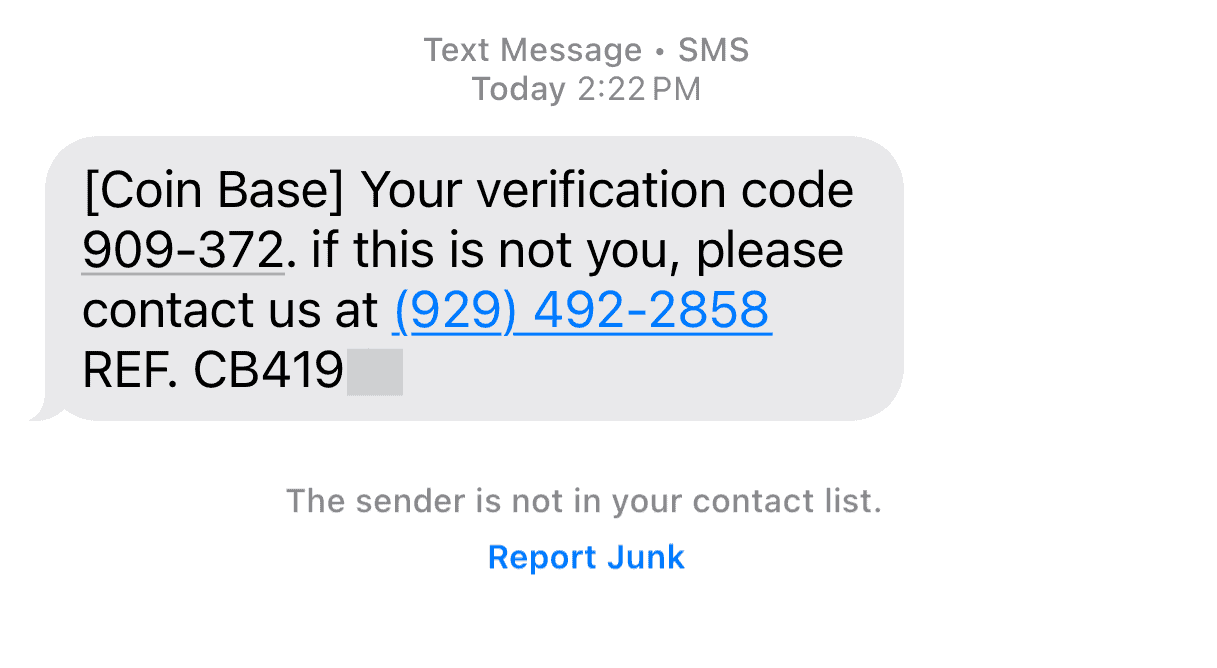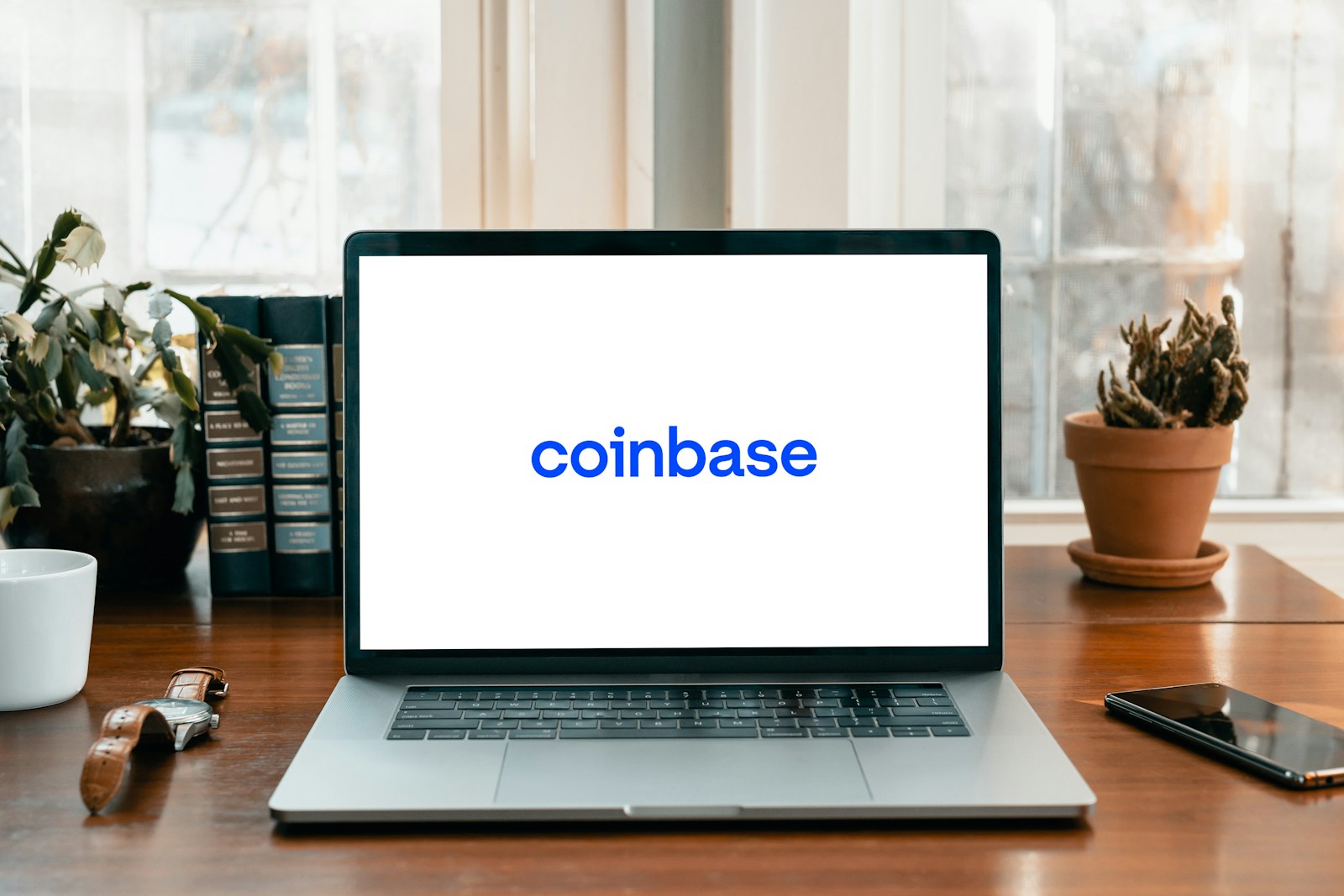Have you ever received a text with a Coinbase verification code when you weren’t trying to log in? This could be a sign of a scam. Fraudsters are increasingly targeting cryptocurrency users with fake verification messages at odd hours, hoping to trick them into revealing sensitive information. Never share your Coinbase verification codes, passwords, or private keys with anyone—legitimate Coinbase employees will never ask for this information.
These scams often start with unexpected text messages containing verification codes, sometimes followed by calls from people claiming to be Coinbase support. They might create urgency by saying your account has been compromised. The goal is to get you to share the verification code or give them remote access to your computer.
If you receive an unexpected verification code from a legit Coinbase texting account, it likely means someone already has your password and is trying to access your account. Don’t respond to the message or click any links. Instead, go directly to Coinbase’s official website to change your password and enable additional security features.
Separately, if you received a random text message from a phone number not tied to Coinbase but asking you to call a phone number with a reference code, that is also fraudulent and you shouldn’t take action.
Here’s an example of this:
[Coin Base] Your verification code 909-372. if this is not you, please contact us at (929) 492-2858 REF. CB41900

This is a random phishing scam that is harmless unless you make the call or follow the directions in the text, so simply deleting it from your phone and clicking the ‘Report Junk’ link is all you need to do.
Another similar one is:
Coinbase. Withdrawal address whitelist feature was changed. Was this done by you? If not, reply "N". . Reply STOP to unsubscribe.
Key Takeaways
- Legitimate Coinbase representatives will never ask for your verification codes, passwords, or private keys.
- Unexpected verification codes often indicate someone has your password and is trying to access your account.
- If you receive suspicious messages, ignore them and secure your account by changing your password through the official Coinbase website.
Understanding the Coinbase Verification Code Scam
Scammers target Coinbase users through fake verification codes to steal personal information and gain access to cryptocurrency accounts. These phishing attempts often appear legitimate but contain subtle warning signs.
How the Scam Works
The Coinbase verification code scam typically begins with a text message or email claiming to be from Coinbase. These messages often create urgency by mentioning “suspicious activity” or “account verification required.” The message includes a link to a fake website that looks nearly identical to the real Coinbase site.
When users click the link, they’re asked to enter their login credentials and two-factor authentication (2FA) codes. Some sophisticated scams might even include:
- Fake customer service numbers
- Coinbase logos and branding
- Messages sent at odd hours (like 4AM) when victims are less alert
- URLs that look similar to the official site but contain small spelling differences
Once scammers obtain your login information and 2FA codes, they can quickly access your account and transfer your cryptocurrency to their wallets.
Potential Risks to Customers
The dangers of falling victim to these scams are significant and immediate. When scammers gain access to your Coinbase account, they can:
- Transfer cryptocurrency to untraceable wallets
- Steal personal information stored in your profile
- Access linked bank accounts or payment methods
- Install malware on your device if you download attachments
Financial losses from these scams can be devastating because cryptocurrency transactions are generally irreversible. Unlike traditional banks, there’s often no way to recover stolen funds.
Remember that legitimate Coinbase employees will never ask for your password or 2FA codes. Any message requesting this information should be treated as a phishing attempt. If you receive a suspicious message, contact Coinbase directly through their official website (type the address manually) or verified app.
Prevention and Response Strategies
Protecting yourself from Coinbase verification code scams requires both preventive measures and knowing how to respond if targeted. Strong security practices and quick action can help safeguard your cryptocurrency assets.
Implementing Robust Security Measures
Use an authenticator app instead of SMS for two-factor authentication (2FA). Apps like Google Authenticator or Authy provide better security since they can’t be intercepted like text messages.
Create strong, unique passwords for your Coinbase account. Consider using a password manager to generate and store complex passwords.
Enable all security features Coinbase offers:
- Face ID or fingerprint login for mobile devices
- Device verification for new login attempts
- Whitelist withdrawal addresses to prevent unauthorized transfers
Set up alerts for account activity. Coinbase can notify you of logins, transactions, and other account changes, helping you spot suspicious activity quickly.
Review your account regularly for unfamiliar transactions. Even small unauthorized charges can signal that someone has accessed your account.
What to Do in the Event of a Scam
If you suspect you’ve been targeted, act immediately. Change your Coinbase password first, then update passwords on any accounts that share similar login credentials.
Contact Coinbase security directly at [email protected] with details about the suspicious activity. Include any phishing messages you received and information about unauthorized transactions.
Forward suspicious text messages to 7726 (SPAM), a service used by cell carriers to track and block scam messages. This helps protect other users from similar attacks.
Place a fraud alert with credit bureaus like TransUnion if you shared sensitive information. Monitor your credit reports for unusual activity.
Document everything related to the scam. Screenshots, message logs, and transaction records may help with investigation and recovery efforts.
Educating Customers on Scam Awareness
Learn to identify common red flags in phishing attempts. Watch for urgent language, poor grammar, unfamiliar links, and requests for personal information.
Verify communications through official channels. If you receive a verification code you didn’t request, contact Coinbase directly using their official website or app—never through links in suspicious messages.
Remember that legitimate companies like Coinbase will never:
- Ask for your password or 2FA codes
- Request remote access to your devices
- Pressure you to make immediate transfers
- Contact you from personal email addresses
Stay informed about current scam tactics by following Coinbase’s security blog and cryptocurrency news sources. Scammers constantly adapt their methods, so awareness is crucial.
Test your knowledge with phishing simulations available online. These practice scenarios can help you recognize scams in real-world situations.
Frequently Asked Questions
Scammers often use verification codes to trick Coinbase users into compromising their accounts. These scams can be difficult to spot but understanding the warning signs and proper responses can help protect your cryptocurrency investments.
What is the purpose of receiving unexpected verification codes from Coinbase?
Unexpected verification codes from supposed “Coinbase” sources are typically scam attempts. Legitimate Coinbase verification codes are only sent when you initiate an action requiring verification, like logging in or making a transaction.
Scammers send fake verification codes hoping you’ll share them or click on malicious links. Their goal is to gain access to your account and steal your funds.
How can you identify a scam involving Coinbase verification codes?
Look for messages arriving at unusual hours, like 4 AM, when you’re less alert. Legitimate Coinbase communications won’t pressure you with urgent deadlines or threats about account suspension.
Check the sender’s information carefully. Scam messages often come from phone numbers or email addresses that don’t match official Coinbase channels.
Grammar mistakes and unusual formatting are red flags. Legitimate companies have professional communication standards.
What steps should be taken if you receive a suspicious verification text claiming to be from Coinbase?
Don’t click any links in the message or reply to it. These could lead to fake websites designed to steal your login information.
Log into your Coinbase account directly through the official app or website to check for any actual notifications. Never use links provided in suspicious messages.
Report the suspicious message to Coinbase through their official support channels. This helps protect other users from similar scams.
How should you respond to unsolicited Coinbase verification code messages?
Ignore and delete the message immediately. Never share verification codes with anyone, even if they claim to be Coinbase support representatives.
Block the sender to prevent further communication attempts. This reduces your chances of accidentally engaging with the scammer in the future.
Consider enabling additional security features on your Coinbase account, such as whitelisting withdrawal addresses and using a hardware wallet.
What are the potential risks of inadvertently sharing a Coinbase verification code?
Sharing verification codes gives scammers direct access to your account. They can bypass two-factor authentication and gain complete control.
Once inside your account, scammers can transfer your cryptocurrency to their wallets. These transactions are typically irreversible.
They may also change your account settings, email address, and password. This locks you out while giving them time to drain your funds.
What are the best practices to protect oneself against scams related to Coinbase verification codes?
Enable all available security features on your Coinbase account. Use app-based two-factor authentication instead of SMS when possible.
Create a strong, unique password for your Coinbase account. Don’t reuse passwords from other websites or services.
Never share verification codes, even with supposed customer support representatives. Legitimate Coinbase staff will never ask for these codes.
Verify all communication through official Coinbase channels. When in doubt, close the message and contact Coinbase directly through their website or app.
Stay informed about common cryptocurrency scams. Scammers constantly develop new tactics, so keeping up with security news helps you stay protected.







